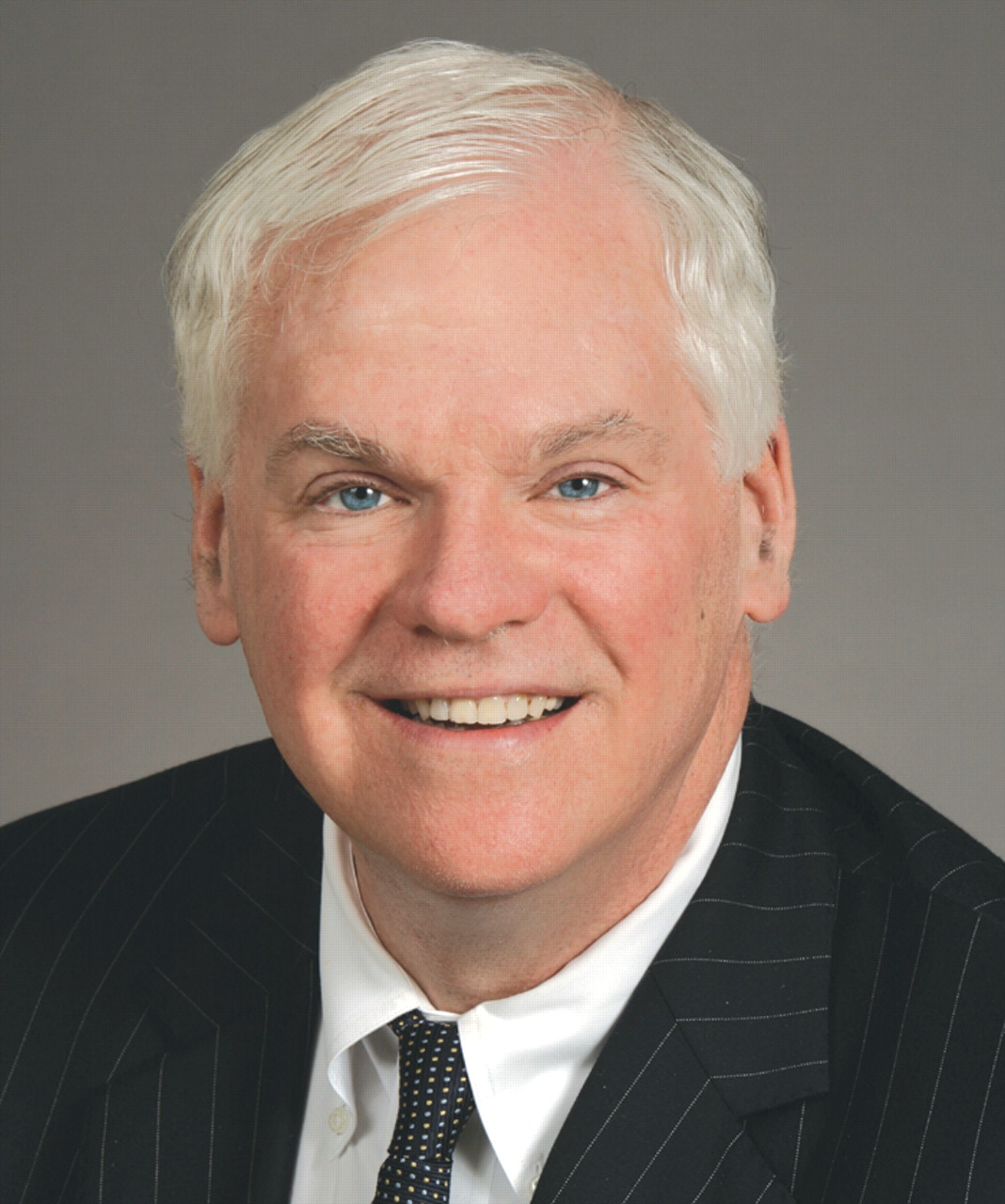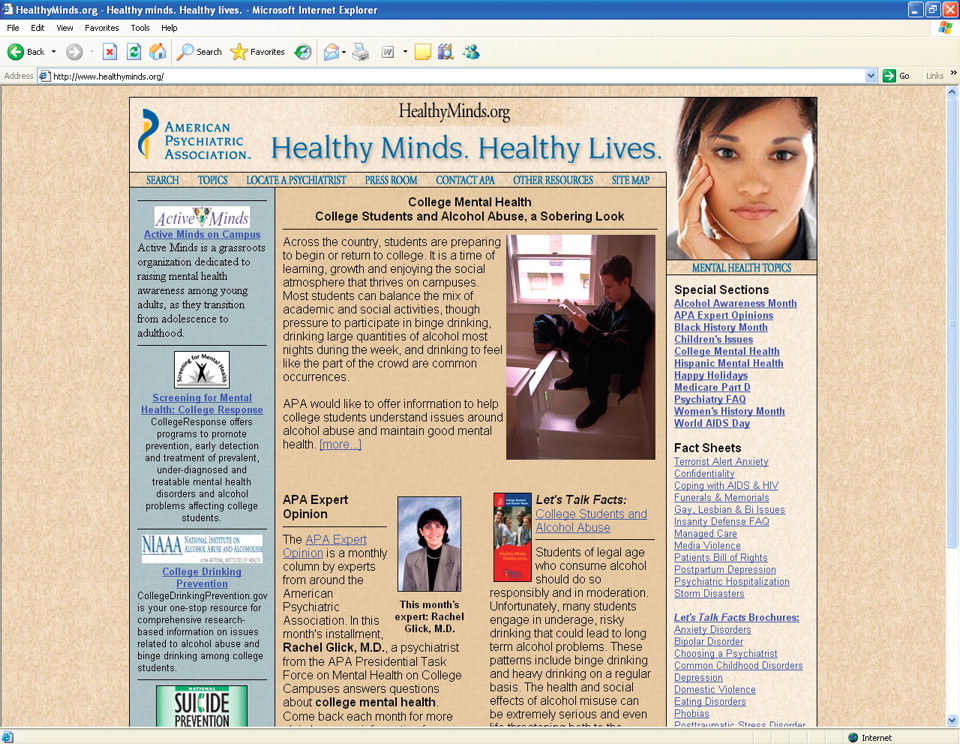APA Reaches Millions With Messages on Mental Health
In 1981 AT&T launched its unforgettable advertising campaign urging customers to “reach out and touch someone.” A quarter century later, many of us still recall that tagline.

You may know that APA launched its own public-information campaign in May 2005. Our campaign tag-line—“Healthy Minds, Healthy Lives”—also has a memorable ring to it.
The second year of the campaign was launched in April in recognition of May as Mental Health Month. APA spokespersons were APA President-elect Carolyn Robinowitz, M.D., Vice President Nada Stotland, M.D., M.P.H., Secretary-Treasurer Donna Norris, M.D., and Mimi Ryans, a consumer advocate whose son has ADHD. Collectively our spokespersons reached nearly 109 million people through television and radio interviews, using each opportunity to advance our mental health message—that mental disorders are real illnesses and can be treated.
The campaign is managed by APA's Office of Communications and Public Affairs (OCPA), led by Lydia Sermons-Ward, along with our public relations firm, Porter Novelli. Beyond Mental Health Month, the campaign continues throughout the year and focuses on topics such as common mental disorders, children's mental health, mental health on college campuses, minority mental health, women's mental health, and men's mental health, to name a few.
Another remarkable aspect of the campaign is the way in which we at APA have improved our ability to provide public information through media outreach and our award-winning Web site,<www.Healthyminds.org>. The site helps APA members help patients and is available around the clock. By reaching out and touching more than a million people, the site is a key tool for combatting stigma and providing accurate information about psychiatric disorders and treatments.
Each month a new topic is featured on the site, along with an advice column from an APA member, consumer fact sheets and brochures on various disorders, and a range of mental health resources and links.
The site also gives the public easy access to 16 new “Let's Talk Facts” brochures and fact sheets published by APA. Nearly 35,000 brochures have been distributed to the public over the past year, yet another example of how APA informs the public about the facts on mental health.
Perhaps the most impressive statistic is that the Web site now attracts as many as 140,000 visits a month—more impressive when you consider that just two years ago, APA did not have a public-oriented Web site.
And there is yet another way to measure the campaign's impact on the public and the public relations community: APA has now won two awards—one national and one on the state level—for the “Healthy Minds, Healthy Lives” campaign and Web site.
APA is also making inroads to communities that have unmet mental health needs.
In August we concluded a campaign on college and university campuses through our College Mental Health Initiative. With the help of APA's Presidential Task Force on Mental Health on College Campuses, co-chaired by Rachel Glick, M.D., and David Fassler, M.D., we offered a sobering look at college students' alcohol abuse. This is an important issue, but one that is not always seen as a mental health issue by students, parents, administrators, faculty, and staff. More than 100 colleges and universities received APA's press releases and fact sheets for use in their school newspapers. We also developed and disseminated a new “Let's Talk Facts” brochure on college students and alcohol abuse, as well as a kit for our district branches and state associations to localize the campaign.
Another exciting campaign is under way as you read this column. During Hispanic Heritage Month, which is September 15 to October 15, we will bring attention to mental health issues in His-panic communities. This is a collaborative effort between APA President Pedro Ruiz, M.D.; APA's Committee of His-panic Psychiatrists, chaired by Andres Pumariega, M.D.; and OCPA. The outreach effort will include a radio public-service message recorded in Spanish and in English by Dr. Ruiz; interviews with Hispanic-focused media outlets featuring expert opinion from the committee members; and new Spanish translations of several key APA resources, all available for free on<www.HealthyMinds.Org>.

APA's public-information Web site can be accessed at<www.HealthyMinds.org>.
But that's not all. Visit<www.HealthyMinds.org> throughout the year for information on other key topics and features: our Mental Illness Awareness Week observance in October, a look at mental health issues and concerns among Native Americans/Alaska Natives during Native-American Heritage Month in November, mood disorders in December, mental health resolutions for the New Year in January, and mental health among African Americans in February.
AT&T has shown us that campaigns can make a lasting impression. Not only has APA's “Healthy Minds, Healthy Lives” campaign reached out and touched millions of people so far, we've made a real difference in their lives. ▪



